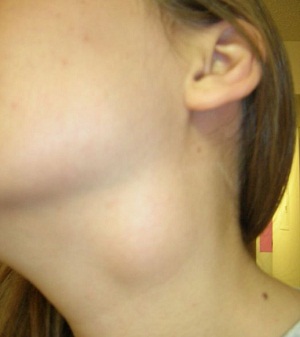



Some people have a skin tag or small dimple that is soft and smooth near the ear, under jaw, or somewhere in the neck. This non-tender structure is called a branchial cyst (or branchial cleft cyst), which actually originates from the four branchial clefts in early embryologic development. Although present at birth, you may not recognize its presence until adolescence, when it enlarges to an oval-shaped structure.
People usually do not have a branchial cyst, but it may appear in some children and adults. There are different types of abnormalities involving each of the four branchial clefts, and these include the following:
Unless you have an infection, branchial cleft cysts usually do not cause pain. Then how would you know whether or not you’re having branchial cyst? Here are some common signs and symptoms of branchial cleft cysts to help you out:
A branchial cyst results from a congenital defect that involves the five tissue bands (pharyngeal arches) that develop in the neck during the early weeks of fetal development. These structures later develop into cartilages, bones, muscles, and blood vessels found in the head and neck. Failure of these arches to develop properly can result in defects such as branchial cleft cysts, which may form spaces (branchial cleft sinuses) on the sides of the neck. Cysts may form when fluids drain into these sinuses. These cysts or sinuses may sometimes become infected.
Most branchial cysts are harmless. However, if they become infected, you may need treatment. It is best to consult your doctor if you suspect you have a branchial cleft cyst. Here are some branchial cyst treatments you can expect:
In most cases, branchial cysts do not need to be treated with medications. However, they may become infected when you have an on-going upper respiratory tract infection. Your doctor may prescribe antibiotics to treat an infected branchial cleft cyst.
Surgical removal of branchial cysts in children is usually delayed until a baby is three months old. It should not be done when an acute infection is present. However, for abscesses, surgical incision and drainage may be done along with antibiotic therapy.
Surgery using the traditional open approach often leads to significant scarring. Alternative techniques, such as a retroauricular or facelift approach, and endoscopic-assisted branchial cyst removal have been proposed. One study found that an endoscopy-guided retroauricular surgery results in minimal scarring.
This is a procedure which involves local injection with picibanil (OK-432), which has been reported to be effective as an alternative to surgical removal of branchial cleft cysts. It may be done using ultrasound guidance.